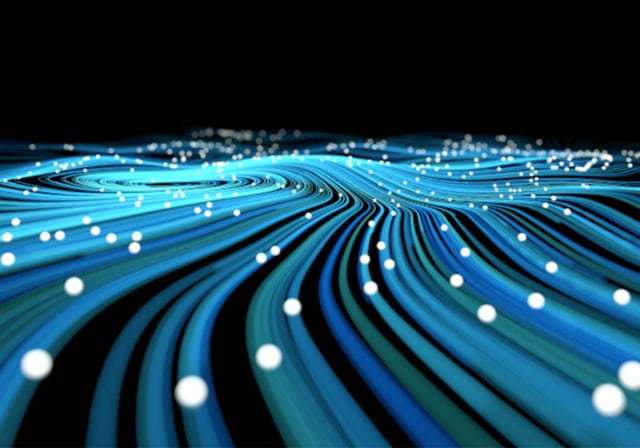In our connected world, the right internet connection means smoother video calls, faster downloads, and less frustration when multiple people are online at once. Let’s break down the similarities and differences between DSL, Fiber, Cable, and Fixed Wireless (5G Home Internet).
DSL vs. fiber vs. cable vs. fixed wireless internet: Key differences
| Internet Type | Best For | Speed | Availability | Setup & Flexibility | Typical Cost | Ideal For |
|---|---|---|---|---|---|---|
| DSL Internet | Users in rural areas with limited options | Often Low | Rural areas (but being phased out for emerging technologies) | Simple setup with modem/router; wired setup | $$ | Basic browsing, email, light streaming |
| Fiber Internet | Power users, smart homes | Very High (symmetrical) | Limited but expanding | Wired setup; pair with strong Wi-Fi router | $$$ | Streaming in 4K, gaming, remote work |
| Cable Internet | Most suburban/urban households | Very High (usually not symmetrical) | Widely available | Wired connection; add router for Wi-Fi | $$ | General streaming, remote work, families |
| Fixed wireless (5G Home Internet) | Many suburban/urban areas Flexible setups, renters | Moderate(location-based) | Expanding, but not everywhere yet | Wire-free setup; uses 5G gateway device | $$ | General streaming, remote work, families |
DSL, fiber, cable, and fixed wireless internet
1. What is DSL internet?
Obsolete in most populated areas, DSL delivers internet using traditional telephone lines. It’s different from the old-school dial-up of yesteryear, as you can use the internet and your landline at the same time, but it’s still one of the older technologies out there.
3 key features of DSL:
- Used in some rural or remote areas
- No cable infrastructure needed, just a phone line
- Simple setup—a DSL modem and a router give you Wi-Fi access
Considerations:
- Lowest speeds compared to newer technologies
- May struggle to support multiple devices or high-bandwidth activities
2. What is fiber internet?
Fiber internet uses fiber-optic cables that send data as pulses of light—making it a super-fast and super-efficient option. It’s ideal for homes with a lot of connected devices or for data-heavy users. Fiber pairs well with modern Wi-Fi routers, so you can enjoy lightning-fast wireless internet across your home.
4 key features of fiber internet:
- Extremely fast speeds, both for downloads and uploads
- Low latency, making it great for video calls and heavy online gaming
- Supports multiple devices without slowing down.
- Future proof, ready to handle tomorrow’s internet demands
Considerations:
- Not widely available yet
- Highest-speed plans can be pricey
- Usually requires professional installation
3. What is cable internet?
Cable internet connects via the same coaxial cables used for cable TV, giving you a solid internet connection in your home.
3 key features of cable internet:
- Widely available in most cities and suburbs
- Reliable connection for larger households and multiple connected devices
- Generally easy to set up Wi-Fi with a cable internet connection (although some may require professional installation, depending on the provider).
Considerations:
- Wired connection is required, giving you less flexibility in your setup
- Fees and installations can be pricey
4. What is fixed wireless (5G Home Internet)
This option uses cellular signals from nearby 5G towers to deliver high-speed internet to your home, typically through a gateway (router-modem combo) device.
4 key features of fixed wireless:
- Quick, easy setup, just plug in the 5G gateway
- Completely wireless—you only need to plug it into an outlet— giving you more flexibility
- Contracts usually not required
- Introduced high-speed internet to areas with no options (or only DSL)
Considerations:
- Requires a strong 5G signal, coverage depends on your provider’s network and your proximity to towers
- Performance can vary with location and weather
- Not available everywhere yet
Common internet terminology demystified
Broadband vs. fiber
People get confused about the difference between broadband vs. fiber, but it’s not really a "versus" issue. Broadband is just a term for any type of high-speed internet, so fiber, DSL, cable, and 5G Home Internet are all types of broadband.
Broadband vs. Wi-Fi
Many people also wonder about the difference between broadband vs. Wi-Fi. Broadband is the actual internet connection that comes into your home. Wi-Fi is how that connection is wirelessly shared across your connected devices. You can have broadband without Wi-Fi (if your computer is plugged directly into your router), but most people use a Wi-Fi router to create a home network. All broadband types, DSL, cable, fiber, and 5G home internet, can be used with Wi-Fi routers.
Fiber internet vs. Wi-Fi
As mentioned above, this isn’t really a "versus" scenario since fiber internet and Wi-Fi are designed to work together. Fiber cables deliver the internet service to your home, but Wi-Fi is how that internet is shared wirelessly with your connected devices, like smart appliances, cameras, laptops, home assistants, and more. So, fiber gives you the bandwidth, and Wi-Fi gives you the mobility. Fiber, when paired with a high-performance Wi-Fi router, delivers seamless connectivity in homes with a lot of smart devices or heavy streaming activities.
Coaxial cables vs. fiber optic cables
When you have cable internet, coaxial cables bring internet into your home. When you have fiber internet, fiber optic cables bring internet into your home. Let’s take a quick look at how the actual cables themselves differ.
- Coaxial internet cables use electrical signals to transmit data through a copper core.
- Fiber optic internet cables use light signals to transmit data through strands of glass (or sometimes plastic) allowing for faster data transmission.
As mentioned in our earlier comparison, coaxial cable is cheaper to install and more readily available, but fiber prices are dropping, and the fiber cables are less prone to interference and signal loss.
4 factors for choosing the right internet type
Not sure which connection is best? Here are 4 things to keep in mind:
- Availability: Narrow down your options by checking what is (and what isn’t) available in your area.
- Budget: Prices vary depending on the provider. Use the chart above to find the best fit for your needs.
- Household type: Large families or remote workers will benefit from fiber or fast 5G.
- Bandwidth & speed: Serious streamers, gamers, and those who deal with large data downloads will need good bandwidth and the highest speeds.
Tip: Many providers, like T-Mobile 5G Home Internet, offer a worry-free test drive to see what works best for your home setup.
Emerging trends in internet connectivity
The future of the internet is faster and more flexible. Fiber expansion is ongoing, especially in underserved communities, 5G technology is rapidly rolling out across cities and rural areas, and Wi-Fi 7 will boost home network performance even further. Soon, more people will have access to high-speed, reliable connections no matter where they live.
Each internet option, DSL, fiber, cable, and fixed wireless (5G Home Internet), comes with its own strengths. Your best choice depends on where you live, how you use the internet, and what fits your budget.
T-Mobile is America’s fastest growing Home Internet provider. Find out if it’s available in your area today—or learn more about T-Mobile Fiber, offering gigabit speeds, no caps on data usage, a Wi-Fi mesh access point, and more.
Learn More About Home Internet
- Internet Basics
- How Does Wi-Fi 6 Help Power Home Internet?
- What Is DSL & How Does It Work?
- The Difference Between 5G and Wi-Fi
Sources:
https://www.gartner.com/en/glossary
https://www.gartner.com/en/information-technology/glossary/fiber-optics
https://www.zdnet.com/home-and-office/networking/fiber-vs-cable-what-is-the-difference
https://tripplite.eaton.com/products/fiber-optic-cable-buying-guide
https://www.highspeedinternet.com/resources/compare-internet-provider-types
https://www.tailwindvoiceanddata.com/blog/coaxial-cable-vs.-fiber-optic-a-comprehensive-analysis
https://www.geeksforgeeks.org/software-engineering/difference-between-wi-fi-and-broadband
https://www.t-mobile.com/news/network/t-mobile-launches-fiber-home-internet-with-new-plans
https://www.netgear.com/hub/technology/wifi-7-vs-wifi-6
https://www.cnet.com/home/internet/what-are-the-different-internet-connection-types



